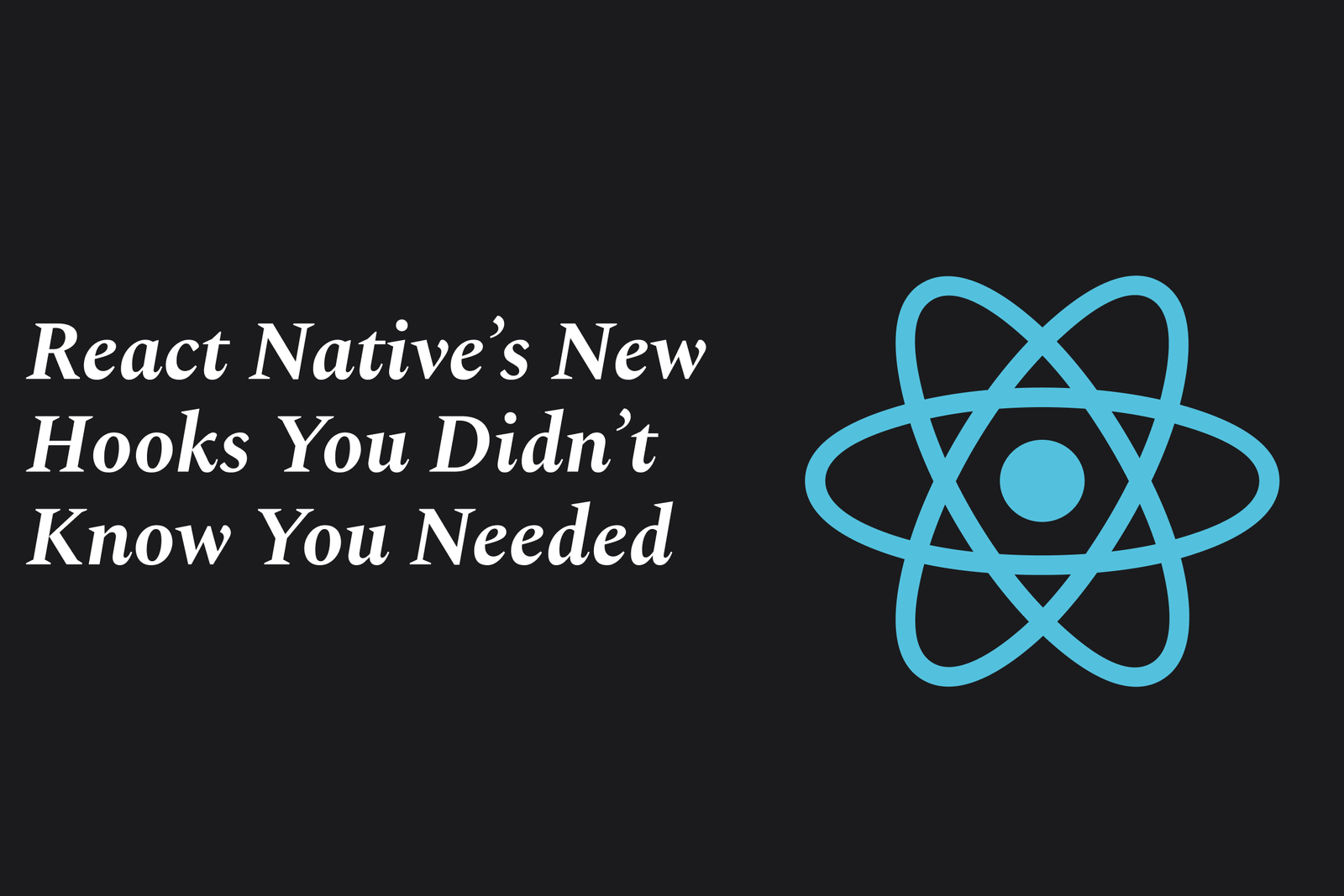React Native?S New Hooks You Didn?T Know You Needed
React Native’s new hooks simplify state and lifecycle management with powerful, easy-to-use APIs like `useFocusEffect` and `useAnimatedStyle`. These hooks enhance performance and code clarity, helping developers build smoother, more responsive mobile apps effortlessly.
React Native’s New Hooks You Didn’t Know You Needed
1 ) Introduction to Memoization Hooks: useMemo and useCallback
React Native developers frequently encounter the hooks `useMemo` and `useCallback`, which are intended to optimize performance by caching values or functions between renders.
These hooks prevent unnecessary recalculations or function recreations by preserving references during component re renders.
However, their usage is often misunderstood and overused, leading to bloated and hard to maintain codebases.
2 ) The Purpose of useMemo and useCallback
Both hooks provide memoization to avoid recreating complex objects or functions on every render.
For example, `useMemo` caches the result of an expensive calculation, returning the cached value unless dependencies change.
`useCallback` caches a function reference to prevent unnecessary re creation, useful when passing callbacks as props.
Proper use ensures that React hooks like `useEffect` don’t trigger on every render due to changed references, but only when actual dependency values change.
3 ) Common Misconceptions and Overuse
Many developers wrap almost all functions and objects in these hooks indiscriminately, under the assumption that it always improves performance.
Ironically, excessive use can degrade performance during the initial render because React must perform memoization work.
Often, memoization is only beneficial when preventing re renders caused by changing prop references or avoiding expensive recalculations.
4 ) Practical Use Cases: Memoizing Props to Prevent Re renders
A frequent use case is memoizing callback functions passed as props to child components.
Without `useCallback`, a new function instance is created each render, causing child components to re render unnecessarily.
Example: Wrapping an `onClick` handler with `useCallback` ensures it retains the same reference between renders unless dependencies change, optimizing render cycles.
5 ) Key Takeaways for Effective Use
Use `useMemo` and `useCallback` sparingly and only when:
You want to avoid expensive recalculations on every render.
You need stable function or object references to prevent unnecessary re renders in child components.
Avoid blanket usage; analyze if memoization actually benefits the component.
Remember, initial renders might be slightly slower with these hooks, so balance optimization against complexity.
Simplify your code by removing unnecessary memoizations, which can make your codebase cleaner and potentially faster.
This article sheds light on the subtle but important nuances of React Native’s hooks `useMemo` and `useCallback`. Understanding their right use can prevent bloated, hard to read code and improve app performance. Most importantly, developers should avoid reflexively adding them everywhere and instead apply them deliberately where they truly make a difference.
https://justacademy.in/news-detail/android-system-permissions-overview
https://justacademy.in/news-detail/android-apps-leveraging-cloud-computing
https://justacademy.in/news-detail/flutter-layout-grid-system-update
https://justacademy.in/news-detail/android-smart-lock-and-security-features
https://justacademy.in/news-detail/flutter-community-meetups-in-2025
Related Posts
In 2025, top Angular libraries offer modern, feature-rich components and tools for building dynamic web apps. From powerful data grids to low-code platforms like UI Bakery, these libraries enhance development speed, UI design, and scalability, making them essential for Angular developers.
Migrating from AngularJS to Angular 17 involves gradually upgrading your app by running both frameworks together using tools like ngUpgrade, rewriting components in TypeScript, and adopting Angular’s modern architecture to enhance performance, maintainability, and long-term support.
Angular state management tools help organize and handle app data efficiently, improving scalability and maintainability. Popular options include NgRx for robust, RxJS-based patterns, and newer Signal Store solutions that offer simpler, reactive approaches integrated tightly with Angular’s latest features.
RxJS in Angular empowers developers to manage asynchronous data streams with powerful operators like `forkJoin`, `combineLatest`, and `zip`. Mastering these key operators in 2025 is essential for building efficient, reactive applications that handle complex event sequences seamlessly.
Angular performance optimization in 2025 focuses on improving app speed and responsiveness by using techniques like OnPush change detection, lazy loading, efficient data caching, and AOT compilation. These practices reduce load times, enhance user experience, and ensure scalable, fast Angular applications.
In 2025, Angular remains preferred for large-scale, enterprise apps with its robust, all-in-one framework, while Vue attracts developers seeking simplicity and fast development for smaller projects. Both frameworks excel, with choice driven by project needs and team expertise.
Angular Signals are a new reactive primitive in Angular 16 that enable fine-grained, efficient change detection by automatically tracking dependencies and updating only affected parts of the UI. They simplify state management and boost app performance, revolutionizing Angular's reactivity model.
Angular interview questions to prepare in 2025 focus on core concepts like components, directives, data binding, routing, and dependency injection, along with TypeScript mastery and latest Angular features to ensure strong practical knowledge for building scalable, efficient web applications.
AngularJS reached its official end of support in January 2022, meaning no further updates or security patches. To ensure app security and performance, developers should consider migrating to modern Angular versions or seek third-party long-term support options if immediate migration isn’t possible.
The Angular Roadmap 2025 highlights upcoming features focused on improving developer experience and performance, including zoneless Angular, Signals integration, enhanced Forms, async data handling, improved HMR, and expanded Angular Material/CDK enhancements, driving modern, efficient web app development.










